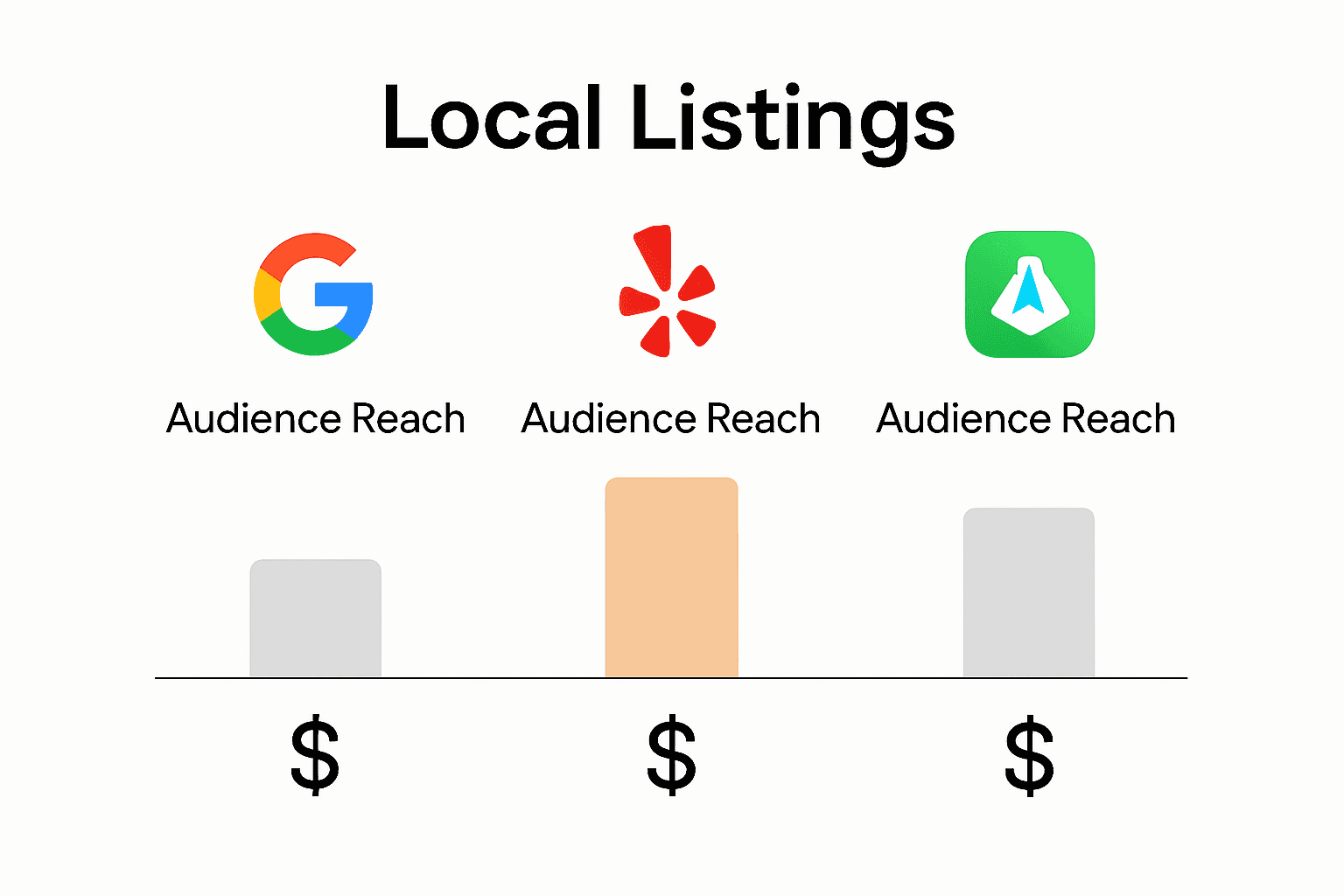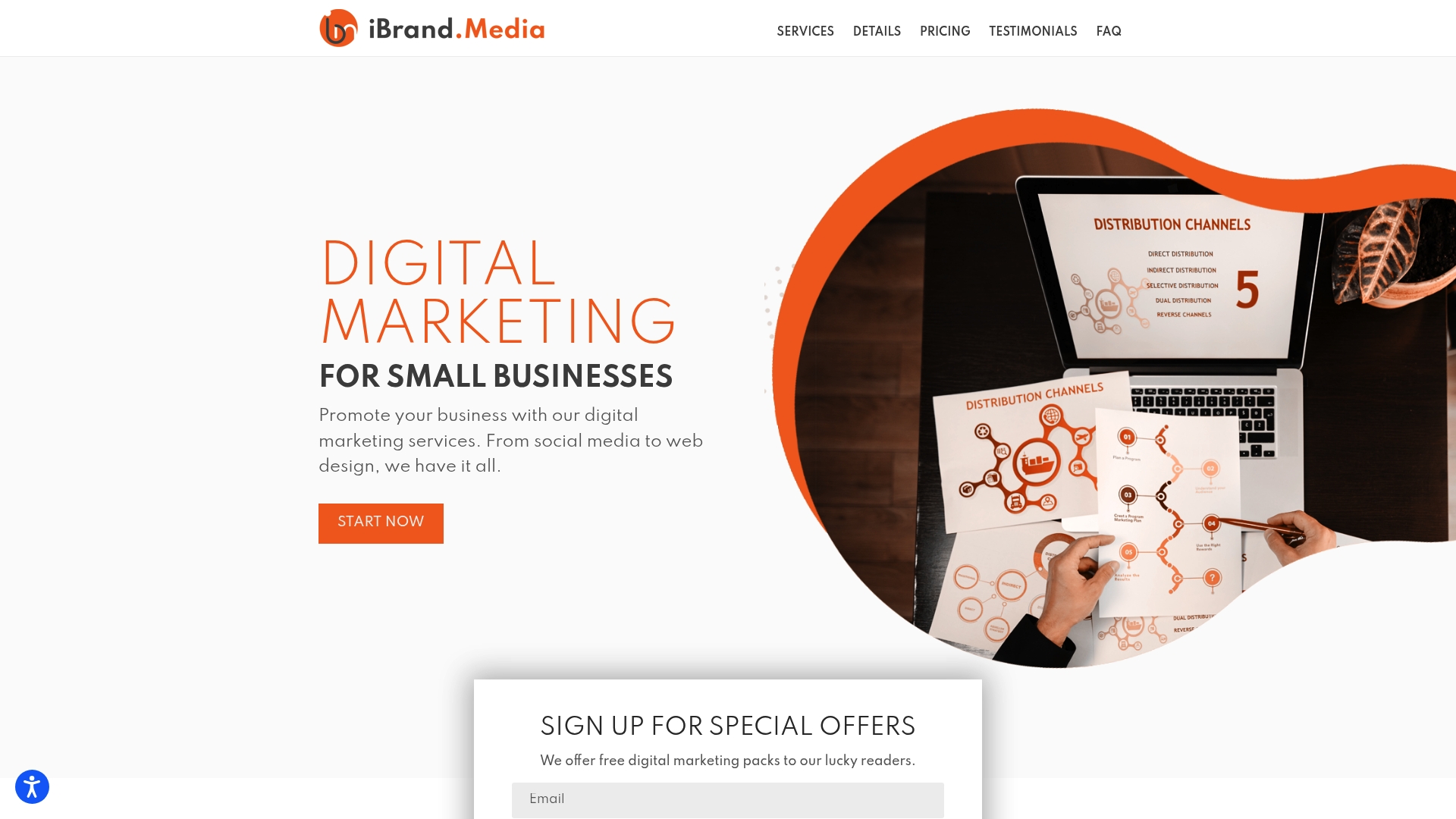Did you know that nearly 97 percent of people search online for local businesses every day? Showing up where customers are looking can make or break your business growth. With so many platforms and directories available, finding the right combination is the secret to reaching the right audience and building trust. The following steps offer proven paths to boost visibility, stand out from competitors, and turn online searches into real-world actions.
Quick Summary
| Key Point | Explanation |
|---|---|
| 1. Identify key local listing platforms | Research and select relevant directories like Google Business Profile or Yelp for your business type and location. |
| 2. Optimize business profiles consistently | Claim existing listings and ensure all information is accurate and uniform across platforms to enhance credibility. |
| 3. Enhance listings with detailed information | Maintain consistent Name, Address, Phone number (NAP) and include high-quality images and compelling descriptions to attract customers. |
| 4. Encourage customer reviews actively | Systematically solicit reviews post-service to build trust and engage with customers through responses to their feedback. |
| 5. Monitor performance regularly | Use analytics tools to track listing performance and adjust strategies based on insights to improve visibility and engagement. |
Table of Contents
- Step 1: Identify Relevant Local Listing Platforms
- Step 2: Create and Optimize Business Profiles
- Step 3: Enhance Listings with Accurate Details
- Step 4: Encourage Customer Reviews and Engagement
- Step 5: Monitor Performance and Update Listings
Step 1: Identify Relevant Local Listing Platforms
When you want to boost your business visibility online, identifying the right local listing platforms becomes your first strategic move. This step is about finding digital directories where potential customers can discover your business easily.
Start by understanding the landscape of local search platforms. According to Wikipedia’s research on local search), key platforms include major search engines like Google, Yahoo, and Bing business centers. These platforms serve as foundational spaces for electronic business directories where geographic targeted searches happen.
Your goal is to map out platforms most relevant to your specific business type and location. Begin with the big players: Google Business Profile, Bing Places, and Apple Maps. Then expand to industry specific directories. For service based businesses like contractors or medical professionals, look into specialized directories that match your sector.
Pro Tip: Not all directories are created equal. Focus on platforms with high domain authority and genuine user traffic.
Consider unique directories like Jasmine Directory, a human edited global web directory known for its manual editorial process. Such platforms can provide excellent SEO impact beyond mainstream listings.
Make a spreadsheet tracking potential platforms. Include columns for directory name, submission process, cost (if any), and potential audience reach. This systematic approach helps you prioritize and track your listing efforts efficiently.

Here’s a comparison of popular local listing platforms:

| Platform | Audience Reach | Submission Process | Cost |
|---|---|---|---|
| Google Business Profile | Very High | Online form, verification | Free |
| Bing Places | High | Online form, verification | Free |
| Apple Maps | High (iOS users) | Business Connect signup | Free |
| Yelp | High in service/food | Online claim, verify | Free Paid Ads |
| Jasmine Directory | Niche SEO audience | Manual editorial review | $$ – Paid |
In the next step, you will learn how to optimize your actual business listings for maximum visibility and engagement.
Step 2: Create and Optimize Business Profiles
You are about to transform your online presence by creating and optimizing business profiles that attract and engage potential customers. This step is your gateway to digital visibility and local market connection.
According to research from business listing guides, the first critical move is claiming existing listings instead of creating duplicates. This means searching for your current online presence and taking ownership of any unclaimed profiles. Focus on defining accurate business categories, precise service areas, and completing platform verifications.
Start with Google Business Profile, which remains the most critical platform for local businesses. Input your complete business information meticulously. According to optimization guidelines, comprehensive profiles include your exact business name, physical address, phone number, website, operating hours, service descriptions, and high quality photos.
Pro Tip: Consistency is key. Ensure your business information matches exactly across all platforms.
Take time to craft a compelling business description. This is your digital elevator pitch where you explain what makes your business unique. Use clear language that speaks directly to your target customers potential needs and highlights your specific value proposition.
Regular updates are crucial. Post current photos, respond to customer reviews, and share relevant business updates.
These actions signal an active engaged business to both potential customers and search algorithms.
In the next step, you will learn strategic techniques for managing and monitoring your new business listings to maximize their impact.
Step 3: Enhance Listings with Accurate Details
Now you will transform your basic business listings into powerful marketing tools that attract and convert potential customers. This step is about adding depth and credibility to your online presence.
According to local SEO research, the key is maintaining absolute consistency in your Name, Address, and Phone number (NAP) across all platforms. Consumers trust businesses with accurate and uniform information. Think of your business details like a digital fingerprint that must match perfectly everywhere.
Learn more about managing online business listings to understand how strategic details can dramatically improve your visibility. Focus on creating comprehensive profiles that go beyond basic contact information.
Research from local marketing experts suggests building robust local citations across multiple directories like Yelp, Bing Places, and Apple Maps. Include high resolution images that are geotagged, add local backlinks, and implement structured data to boost your business authenticity.
Pro Tip: Use professional quality images that showcase your business environment or products. Authentic visuals build immediate customer trust.
Write detailed descriptions that not only explain what you do but also communicate your unique value proposition. Use language that resonates with your target audience and highlights what sets you apart from competitors.
In the next step, you will discover strategies for actively managing and monitoring your newly enhanced business listings.
Step 4: Encourage Customer Reviews and Engagement
Customer reviews are the heartbeat of your online reputation and local search visibility. This step will help you transform casual customers into active brand advocates who amplify your business presence.
According to local SEO research, soliciting customer reviews is more than just collecting positive feedback. It is a strategic approach to building trust and improving your local search rankings across platforms like Google, Facebook, Yelp, and Trustpilot.
Learn more about engaging customers online, and understand that every review matters. Develop a systematic approach to requesting reviews. After completing a service or sale, send a friendly follow up email or text with a direct link to review platforms. Make the process simple and straightforward for your customers.
Research from business profile optimization experts emphasizes the importance of active profile management. Respond to every single review personally. For positive reviews, express genuine gratitude. For negative reviews, demonstrate professionalism by acknowledging concerns and offering to resolve issues privately.
Pro Tip: Create a template for review request messages that sounds authentic and appreciative.
Utilize platform features like Q&A sections to showcase your responsiveness. Answering customer questions quickly and thoroughly signals that your business is attentive and customer focused. This ongoing engagement can significantly enhance your visibility and potentially improve conversion rates.
In the next step, you will learn advanced strategies for monitoring and analyzing your local listing performance to continually refine your approach.
Step 5: Monitor Performance and Update Listings
You have now entered the critical phase of maintaining and optimizing your local business listings. This step is about transforming raw data into actionable insights that will continuously improve your online visibility.
According to business profile optimization guides, regular maintenance is not just recommended it is essential. This means consistently updating your profile with fresh photos, current posts, responding to Q&A sections, managing reviews, and ensuring your business hours and services remain accurate.
Research from local SEO experts highlights the importance of using performance tracking tools. Leverage Google Business Profile Insights, Google Analytics, and Search Console to gain deep understanding of your listing’s performance. These platforms provide critical metrics about user interactions, search visibility, and customer engagement.
Discover advanced strategies for online business management to stay ahead of the competition. Pay close attention to key performance indicators like view counts, click through rates, and customer actions initiated from your listings.
Pro Tip: Set a monthly calendar reminder to review and refresh your business listings.
Competitive analysis is equally crucial. Periodically review how competing businesses in your area are presenting themselves online. Look for opportunities to differentiate your listing and address any gaps in your current approach.
Remember that local listing optimization is an ongoing process. What works today might need adjustment tomorrow as search algorithms and user behaviors evolve.
Ready to Supercharge Your Local Visibility and Outshine the Competition?
If you have struggled to get noticed on platforms like Google Business Profile or Yelp and you want to capture more local customers, you are not alone. The article covered how standing out in local listings depends on consistently accurate information, review management, and ongoing profile optimization. Many businesses find this process overwhelming, especially when trying to keep track of all details while running daily operations.

Now you can let experts handle your local listing optimization from start to finish. At ibrand.media, we specialize in helping small and medium businesses boost their local presence with proven digital marketing solutions. We make it easy for you to manage your business listings, attract more positive reviews, and stay ahead of local search trends. Explore real-time performance tracking and personalized strategy by visiting our main site or learn more about related services in our Uncategorized | Ibrandmedia section. Don’t let your business blend in with the crowd. Take action now and watch your online visibility grow—connect with our team and unlock your business’s full potential today.
Frequently Asked Questions
How can local listings boost my business visibility?
Local listings can significantly enhance your business visibility by ensuring your information appears in relevant search results. Start by claiming your profiles on major platforms like Google Business Profile and Yelp to allow potential customers to easily find and contact you.
What details should I include in my business listings?
You should include your business name, address, phone number, website, operating hours, and a compelling business description. Ensure this information is consistent across all platforms to boost trust and improve local search rankings.
How do I encourage customers to leave reviews on my local listings?
Encourage customer reviews by sending a follow-up message after a service or purchase, asking them to share their experience. Simplify the process with a direct link to your review platform, aiming for at least five new reviews each month to improve your online reputation.
How often should I update my business listings?
Regularly update your business listings to keep them fresh and accurate, ideally every month. Make it a routine to refresh photos, respond to reviews, and post updates to engage potential customers effectively.
What performance metrics should I track for my local listings?
Track metrics such as view counts, click-through rates, and customer actions taken from your listings. Use these insights monthly to determine areas for improvement and adjust your strategy accordingly.
Recommended
- Managing Business Listings Online: Essential Strategies for 2025 | Ibrandmedia
- Top Benefits of Local Marketing for Small Businesses 2025 | Ibrandmedia
- Top Benefits of Local Advertising for Small Businesses in 2025 | Ibrandmedia
- Top Benefits of Local Marketing for Small Businesses 2025 | Ibrandmedia
- What Is Local SEO? A Comprehensive Guide to Boost Your Local Business Visibility
- Understanding Local SEO for Businesses: A Clear Guide

Recent Comments